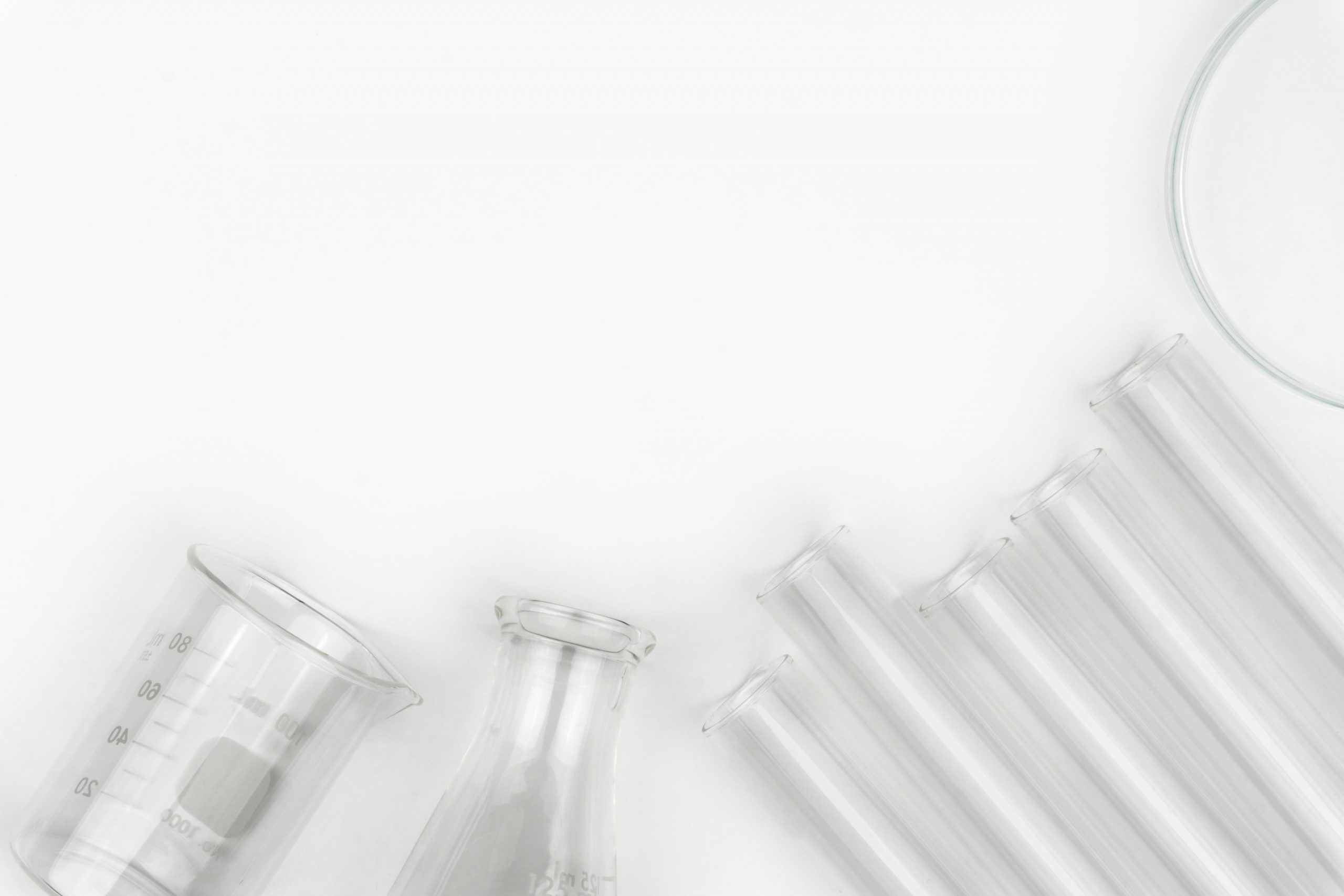The introduction of hormones in the mid-20th century changed the world for women. With the advent of contraceptive pills and hormone therapy for menopause, women could redefine their roles and take more control over their lives. Along with the women’s movement, these innovations empowered women and give them the freedom to live their lives as they choose.
But once regarded as a savior of women everywhere, hormone therapy hit some nasty speed bumps along the way. The history of its use reveals it took science time to grasp the full complexity of how menopause affects women’s health and the risks and benefits of using hormones to treat it.
Today we understand there are tradeoffs to taking hormones, and they’re not recommended for everyone. Hormone therapy has been linked to increased risk of heart disease and breast cancer, among other things. Risk factors vary depending on your age, whether or not you’ve had your uterus removed, and whether you’ve had, or are at risk for, several chronic diseases, including heart disease, breast cancer, blood clotting issues, and more.
Only you can determine what’s right in your situation. But if you can’t or don’t want to take hormones, you don’t have to let menopause become a roadblock in your life. Ever since the 1960s, women have not been content to settle for less than all we can be, and we’re not about to let hot flashes and mood swings derail us now. Whatever the form it takes, women need treatments that enable us live the lives we want.
The history of hormone therapy
Hormone therapy first became available in 1942, when Premarin, the brand name for “CEE” or conjugated equine estrogen, was approved by the Federal Drug Administration (FDA) for the treatment of hot flashes. But it wasn’t until a few decades later that hormone therapy started to become a mainline treatment for menopause.
Mounting evidence that hormone depletion was behind more than just hot flashes, along with the growing women’s liberation movement, encouraged doctors and women alike to consider prescribing and using hormone therapy, respectively. “Hormone deficiency syndrome,” as it was called then, increasingly was being linked to chronic health conditions like heart disease and Alzheimer’s disease. Estrogen seemed to be the obvious answer, as it seemed to both treat symptoms of menopause as well as prevent chronic diseases.
Women were on board–the promise of hormones meant they could, according to this paper, “free themselves from the malediction of estrogen loss and conserve their femininity.” In 1966, Robert A. Wilson published a best-selling book called “Feminine Forever,” explaining how estrogen could save women from the ravages of menopause symptoms. “Now almost every woman, regardless of age, can safely lead a full sex life for her entire life,” read the cover of the book.
In 1988, the FDA approved HRT for the prevention of osteoporosis, opening the door for HRT to increasingly be prescribed for the prevention of chronic diseases. In 1992, the American College of Physicians officially endorsed HRT for the “prevention of coronary disease.” It became the champion of the campaign as it transitioned from “feminine forever” to “healthy forever.” By this point, 40% of menopausal women were taking some kind of hormone therapy.
The landmark study
After widespread claims estrogen provided “benefits” to the cardiovascular system, the FDA required randomized trials to be done. In 1998, the Women’s Health Initiative (WHI) was formed and began the largest study to date looking at the risks and benefits of hormone therapy for menopausal women.
The longitudinal study, enrolling over 27,000 women and tracking their health over many years, was halted immediately after the first results in 2002 showed an increased risk of chronic heart disease and invasive breast cancer.
Although it initially provoked some panic, follow-up continued and the study paved the way for further research establishing most of what we now understand about the risks and benefits of hormone therapy. Not all of the results from the study were negative, and further studies have elucidated more situations where hormone therapy may be safe for some women.
The goals of the study
The main goal of the study was to determine the benefits and risks of hormone therapy for menopausal women. Specifically, the primary outcome looked at rates of chronic heart disease and invasive breast cancer. Secondary outcomes included rates of colorectal and endometrial cancer, stroke, pulmonary embolism, hip fracture (a possible indicator of osteoporosis), and dementia.
The study enrolled women aged 50-79 and divided them into two main cohorts: those with intact uteri, making up 60% of the participants, and those without making up the rest.
It had previously been established that women who took estrogen-only hormone therapy saw increased rates of endometrial cancer, but adding progesterone ameliorated this risk. Because of this, the study looked at two therapies: combined therapy for women with intact uteri, and estrogen-only therapy for women who had had a hysterectomy.
Results
In terms of the primary outcomes, combination therapy showed increased risk scores for both heart disease and breast cancer, but estrogen-only therapy showed decreased risks of these conditions. Combination therapy also showed an increased rate of pulmonary embolism that was not reflected in the estrogen-only group. Both types of therapy, however, increased the risk of stroke by 35% for estrogen-only therapy and 37% for combined.
However, combination therapy showed lower risk scores for colorectal and endometrial cancers and hip fractures.
The study also noted self-reported side effects. Women on HRT reported improvement in hot flashes and joint pain, better sleep, fewer incidences of diabetes, and slightly improved quality of life. On the other hand, women also noted more urinary incontinence.
Conclusions
The study highlights several key points about what we know about HRT. Here are the key takeaways that still hold true:
- Combination therapy is riskier than estrogen-only
- For women who have had a hysterectomy, estrogen-only HRT is safer overall but not without increased risks
- All systemic HRTs raise the risk of stroke and pulmonary embolism
- Overall, fewer adverse events were reported for women in the 50-59 age group as compared to the 60-79 year old age group
- Most risk factors dissipated after treatment was stopped
- Participants over the age of 65 saw some cognitive decline
But the biggest takeaway is that the ratio of risk to benefits will vary for everyone, and the choice to take them is a personal one.
Using local hormones
All of the above represent concerns when taking systemic hormones, i.e., a pill, patch, or otherwise, that cause higher levels of hormones throughout your body. But hormones can also be used locally (such as vaginally), in the form of lotions, gels, and rings.
When you use a local hormone product, most of the product is absorbed into the tissues where it’s applied, where it can effectively control primarily the genitourinary symptoms of menopause (GSM) including vaginal dryness. Although a small amount may reach the bloodstream, these products use low doses of hormones and don’t carry the same risks as systemic products. The WHI study did not find any increased risk of chronic diseases by women using local hormone products.
What are non-hormonal alternatives?
The public was alarmed by the results of the study at the time, and the use of hormones for menopause dropped sharply. The hormone therapy industry, estimated at $5.3 billion in 2001, decreased 62% to $2.0 billion by 2008.
Still, women didn’t stop looking for ways to feel better.
Beware of bioidentical hormones
In the wake of 2002, women wanted solutions that didn’t put them at increased risk for chronic disease. As a result, the market for “bioidentical” custom-compounded formulations exploded. These prescription medications, written by your doctor and filled by a compounding pharmacy, promised equal if not better results than standard HRT.
Many women rushed to get prescriptions for these medications, often assuming they were somehow “more natural” or safer than standard HRT. Many companies offered “personalized” dosing, claiming a simple saliva test would indicate the proper dose for you.
Unfortunately, none of the claims were true. Not only do these custom formulations contain molecules that work and act the same as standard hormone therapy, but they’re also not regulated and can contain unsafe ingredients. This is what you need to know:
- Bioidentical custom-compounded drugs still contain hormones, often at higher amounts than standard HRT
- Some tested contained twice as much hormone
- Although they may contain FDA-approved ingredients, the formulations are unregulated and can contain unsafe ingredients
- They are not safer, despite claims their medications have a lower risk of associated cancers
- Saliva testing does not provide enough information to inform custom dosing
Despite warnings, many women (and their doctors) misunderstand the risks. A 2016 study shows upwards of 33 million prescriptions for these types of medications were filled, representing $1.6 billion and closely rivaling the number of standard HRT prescriptions.
One highly concerned OB-GYN said using custom-compounded meds, “is like trying to make your own penicillin at home by letting an orange peel grow blue fungus in your pantry, and then scraping off about a teaspoon … as opposed to taking a 500-milligram tablet of penicillin.”
It’s hardly necessary to put yourself at risk–the FDA has approved many bioidentical hormone products they consider safe to use, under the same guidelines as standard HRT. Many of these products are from plant sources.
Non-hormonal relief
Of course, you’re welcome to nix hormones altogether. Whether you use HRT or not, there’s no “cure” for menopause–either way, it’s all about treating the symptoms effectively, in a way that works for you.
Non-hormonal treatment for menopause symptoms can come in many forms, but most fall into these categories:
- Medications. There are many non-hormonal prescription medications that can help menopause symptoms. Selective serotonin reuptake inhibitors (SSRIs), for example, have been shown to reduce hot flashes.
- Lubricants and creams. These need not contain hormones to provide soothing relief for vaginal dryness or to improve sexual wellness.
- Herbal remedies and supplements. There are OTC products women have been using for ages to treat menopause symptoms, such as red clover, black cohosh, and evening primrose oil. Actual data to suggest that these herbs are effective is lacking, but some interventions have shown enough promise to warrant further study.
- Exercise & lifestyle changes. Exercise helps improve mood and cognition, increases blood flow, and helps keep your heart and bones strong.
- Mindfulness/meditation. These practices can help with mental clarity and improve mood and sleep.
The bottom line
For years, hormones were the “best”, if not the only, way to treat the slings and arrows of menopause. The story of hormone therapy also begins the story of women’s victory in achieving more control over the direction of their lives; to not be weighed down by biology, but working with it to thrive and enjoy the lives we’ve built for ourselves. Whether or not you can or want to use hormone therapy, you don’t have to suffer from bothersome menopause symptoms–alternatives are out there, and finding a treatment that works for you is worth it. You are worth it. Learn more with Revelry Cannabis.
References
Cagnacci, A., & Venier, M. (2019). The Controversial History of Hormone Replacement Therapy. Medicina, 55(9), 602. https://doi.org/10.3390/medicina55090602
Crandall, C. J., Hovey, K. M., Andrews, C. A., Chlebowski, R. T., Stefanick, M. L., Lane, D. S., Shifren, J., Chen, C., Kaunitz, A. M., Cauley, J. A., & Manson, J. A. E. (2018). Breast cancer, endometrial cancer, and cardiovascular events in participants who used vaginal estrogen in the Women’s Health Initiative Observational Study. Menopause, 25(1), 11–20. https://doi.org/10.1097/gme.0000000000000956
Feminine Forever: M.D. Robert A.Wilson: Amazon.com: Books. (1966). Amazon.Com. https://www.amazon.com/Feminine-Forever-M-D-Robert-Wilson/dp/B000J00XN0
Files, J. A., Ko, M. G., & Pruthi, S. (2011). Bioidentical Hormone Therapy. Mayo Clinic Proceedings, 86(7), 673–680. https://doi.org/10.4065/mcp.2010.0714
Harvard Health Publishing. (2021). FDA-approved bioidentical hormones for menopausal symptoms. Harvard Health. https://www.health.harvard.edu/womens-health/fda-approved-bioidentical-hormones-for-menopausal-symptoms
Kolata, G. (2002, July 9). Study Is Halted Over Rise Seen In Cancer Risk. The New York Times. https://www.nytimes.com/2002/07/09/us/study-is-halted-over-rise-seen-in-cancer-risk.html
Lobo, R. A., Pickar, J. H., Stevenson, J. C., Mack, W. J., & Hodis, H. N. (2016). Back to the future: Hormone replacement therapy as part of a prevention strategy for women at the onset of menopause. Atherosclerosis, 254, 282–290. https://doi.org/10.1016/j.atherosclerosis.2016.10.005
Managing menopause without hormones. (2020, September 8). Facing Hereditary Cancer Empowered. https://www.facingourrisk.org/info/risk-management-and-treatment/menopause-management-without-hormones
Manson, J. A. E., Chlebowski, R. T., Stefanick, M. L., Aragaki, A. K., Rossouw, J. E., Prentice, R. L., Anderson, G., Howard, B. V., Thomson, C. A., LaCroix, A. Z., Wactawski-Wende, J., Jackson, R. D., Limacher, M., Margolis, K. L., Wassertheil-Smoller, S., Beresford, S. A., Cauley, J. A., Eaton, C. B., Gass, M., … Wallace, R. B. (2013). Menopausal Hormone Therapy and Health Outcomes During the Intervention and Extended Poststopping Phases of the Women’s Health Initiative Randomized Trials. JAMA, 310(13), 1353. https://doi.org/10.1001/jama.2013.278040
Pinkerton, J. A. V., & Constantine, G. D. (2016). Compounded non-FDA–approved menopausal hormone therapy prescriptions have increased. Menopause, 23(4), 359–367. https://doi.org/10.1097/gme.0000000000000567
Stagnitti, M. N., & Lefkowitz, D. (2011, November). Trends in Hormone Replacement Therapy Drugs Utilization and Expenditures for Adult Women in the U.S. Civilian Noninstitutionalized Population, 2001-2008. Agency for Healthcare Research and Quality. https://meps.ahrq.gov/data_files/publications/st347/stat347.pdf
Zimmerman, R. (2016, September 23). More Women Choose Custom-Made Hormone Therapy; Influential Docs Worry About Potential Harm | CommonHealth. WBUR.Org. https://www.wbur.org/commonhealth/2016/09/23/hormone-therapy-concerns







